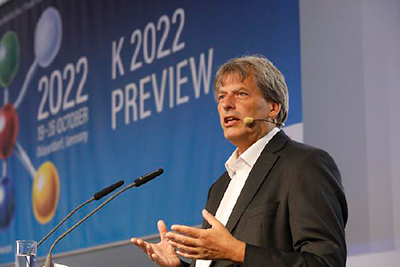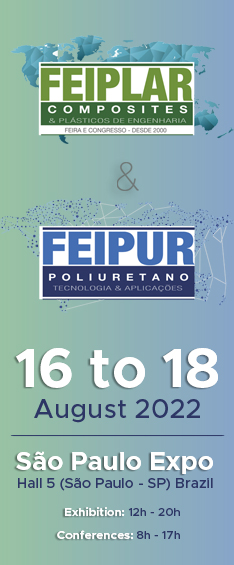| Plastics News |
Röhm will highlight Plexiglas molding compounds at K 2022
July, 12, 2022 - Having started out as a small consumer trade fair, K has grown into the world’s leading trade fair for the entire plastics industry – and is celebrating its 70th anniversary in 2022. Röhm GmbH – with its Plexiglas molding compounds – is one of the pioneers who have regularly exhibited at K since its inception in 1952. “K has always been an important forum for us to meet our customers and partners and discuss innovations and inspiration,” says Siamak Djafarian, Head of the Molding Compounds business unit. “And just like the trade fair, we have also continued to develop alongside technological progress.” Standard and special molding compounds enable many innovative applications in the automotive and lighting industry and household goods sector. The business unit will present its growing portfolio of these products at its stand in Hall 6, Booth E 29, at K2022, October 19-26 in Düsseldorf. Visitors to the booth can see the custom materials for various application areas for themselves. For example Plexiglas, the brand polymethyl methacrylate (PMMA) from Röhm is an extremely diverse plastic that offers excellent light transmittance and extraordinary weather resistance, that company assures. It is also lightweight, has the highest surface hardness of any thermoplastic material, can be processed using all thermoplastic methods, and enables high reproduction accuracy. With 15 production sites around the world, Röhm says it is actively expanding its capacity, both in production and in technical service in all relevant regions. Saving resources with Plexiglas molding compounds Climate protection and the circular economy are two of the main topics at this year’s K. “These challenges require a global effort. We assume responsibility for our climate, society and the limited natural resources we have,” says Hans-Peter Hauck (photo), Chief Operating Officer (COO) at Röhm. Sustainability is an integral part of Röhm’s business strategy. As one of the world’s leading manufacturers in the methacrylate business, Röhm has set itself the goal of climate-neutral production and zero greenhouse gas emissions by 2050. A first milestone on this journey is the “Track 2030” initiative with the goal of significantly reducing carbon dioxide emissions, which result from the production or sale of Röhm products. “High-performance plastics can make a significant contribution to managing the challenges we face,” explains Hauck. Plexiglas is sustainable by design: PMMA molding compounds are not only easy to recycle, but their extraordinary weather resistance means that they are very durable, and thus help to save resources. In addition, Plexiglas molding compounds are integral to sustainable applications, the company claims. Focus topics from Plexiglas molding compounds at the K 2022 trade fair: Plexiglas Optical HT: Lighting solutions with higher heat deflection temperature Be it for low-profile components or increasingly powerful lights, Plexiglas molding compounds have kept pace with progress in lighting technology for decades. Röhm says that its Plexiglas molding compounds can be used to produce completely transparent light covers, as well as light covers with light-guiding structures and those that scatter light for a broad range of purposes. With Röhm’s latest special molding compound Plexiglas Optical HT, the days of compromising between high optical quality and suitability for high long-term service temperatures are gone, Röhm says. Plexiglas Optical HT covers both requirements, making it ideal for contemporary product design, such as lenses for high-performance LEDs and long light guides. Plexiglas molding compounds: Taillights as a brand statement For almost the same length of time that K has welcomed visitors, Plexiglas molding compounds have been used in covers for taillights. The material replaced glass covers in the mid-1950s. Over time, the small, functional lights have been transformed into complex components for brand-typical signature lights – and Röhm has also continued to develop its customized portfolio of special molding compounds to meet this demand. The company produces transparent molding compounds in signal colors or crystal clear variants, as well as versions with light-scattering properties. The scattering behavior and transparency vary depending on the product grade. Röhm says the molding compounds are easy to process, even in innovative procedures such as laser welding – a process that has increased freedom of design when it comes to taillights, enabling angular components to be combined with minimal joints. Impact-resistant Plexiglas special molding compounds: Robust materials for vehicle fronts The design of vehicle front ends is also changing, with long light guides, high-gloss panels and logos replacing chrome. A vehicle front requires particularly robust materials that have been impact-modified. For illuminated applications, the Plexiglas Resist AG 100 special molding compound meets both optical and mechanical requirements, Röhm says. In high-gloss panels at the front of the vehicle, Plexiglas Hi-Gloss NTA-5 is a robust and resource-efficient alternative to components that need additional painting, the company claims. Its high weather resistance properties ensure a sophisticated appearance that lasts – one that has long become part of vehicle design with other non-transparent pillar covers, the manufacturer assures. Plexiglas for household goods: Attractive design and smart functions The aesthetics of household goods are an increasingly important factor, particularly as kitchens are increasingly used as additional living areas. According to Röhm, Plexiglas molding compounds upgrade the appearance of all types of household goods – whether it is used for permanently high-gloss surfaces, for illuminated designs or operating panels, or for displays with black panel effects. These integrate almost seamlessly into the housing: When the appliance is off, only a high-gloss, black cover is visible; when it is on, the display shows images in full color. Visitors to K 2022 can see this effect for themselves at Röhm’s booth (Hall 6, Booth E29). Röhm says that Plexiglas molding compounds turn household goods into design objects: High-quality surface finishes, light design or hidden displays using the black panel effect mean Röhm products integrate special functions while simultaneously ensuring the visual properties are enhanced, the company assures. With 3,500 employees and 14 production sites worldwide, Röhm is one of the leading manufacturers in the methacrylate business. The medium-sized company with branches in Germany, China, the USA, Mexico, and South Africa has more than 80 years of experience in methacrylate chemistry and a strong technology platform. Our best-known brands include Plexiglas®, Acrylite®, Meracryl®, Degalan®, Degaroute® and Cyrolite®. Polymethyl methacrylate (PMMA) products from Röhm are sold in the European, Asian, African and Australian continent under the registered trademarks Plexiglas® and Pleximid®, in the Americas under the registered trademarks Acrylite® and Acrymid® Source: Röhm |


